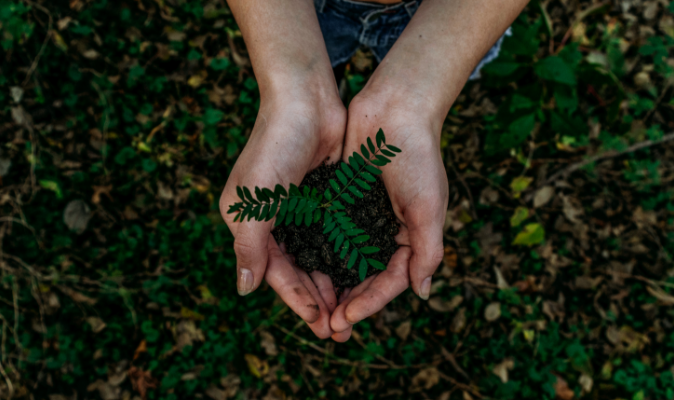Nature, A Natural Healer

There is always a therapeutic effect of nature on us. Isn’t that right? Experiencing a greener environment stimulates creativity and leaves you feeling more inspired. In addition to helping your brain generate new ideas, greenery also helps you relax.
Green spaces make us feel close to nature and connected to ourselves. It’s not an unknown thing that nature is the key to life. Here are a few examples why you should choose to stay around nature or greenery.
Green spaces improve immune function.
Spending deliberate time in nature is a Japanese treatment called “forest bathing” that has been shown to significantly boost immunity. The innate immune system relies on natural killer cells to function properly; one of their most important functions is eliminating tumors.
Green spaces improve mental health.
We tend to focus on physical health, but mental health (which isn’t really separate from physical health) is arguably more reliant on regular exposure to green space. Among both rural and urban residents, high levels of neighborhood green space were consistently linked to lower levels of anxiety, depression, and stress.
Green spaces lower blood pressure.
A week-long evergreen forest retreat reduced hypertension in elderly, while a control group taking a similar retreat in the city experienced no benefits to blood pressure.Even in 10 year old kids living in urban areas, low levels of nearby green space were associated with higher blood pressure. No one’s blood pressure is immune to the lack of green space, and kids might even be more susceptible.
Green spaces improve healthy longevity.
In a recent study out of the Netherlands, proximity to urban green space was associated with improvements in both longevity and healthy longevity. So not only were people living longer, they were living longer and more healthfully: compression of morbidity. Controlling for income level did not alter the effect.
Green spaces promote physical activity and exercise by making it more enjoyable.
People enjoy working out in nature. They prefer to walk through a park along a suburban street. They’d rather hike than slog on a treadmill. The closer you are to a green space, the more likely you are to be physically active. Better still, green spaces promote the precise type of physical activity we so desperately lack these days, walking
Green spaces also have psychological benefits of physical activity and exercise.
Exercise isn’t just good for the body, but also the mind; we often forget this. A 2011 meta-analysis broke down the psychological benefits of outdoor workouts. Compared to indoor workouts, outdoor workouts resulted in greater revitalization, increased energy, and more positive engagement, along with less depression, anger, confusion, and tension.
Green spaces reduce blood sugar.
It is shown in many studies that spending an ample amount of time in green spaces or in nature decreases our blood sugar.
Green spaces improve sleep.
When you go camping, your sleep typically improves and instead of staying up past midnight, you might find yourself nodding off shortly after dark and waking up refreshed like never before. According to the conventional Primal explanation, the lack of artificial lighting is allowing your natural circadian rhythm to dictate your sleep habits. That’s certainly a huge part of it, but what if the presence of green vegetation is also playing a role? A recent study found evidence of such an effect, with urban dwellers living near green spaces reporting healthier sleep habits.
Green spaces make us more productive.
Exposure to green space engages our involuntary attention, the kind of soft focus where we’re seeing, hearing, and smelling sensory data without devoting huge amounts of brain power to it. This restores our voluntary attention, the kind of hard focus we require to concentrate on work-related tasks and be productive. Even brief exposure to pictures of nature scenes restores our attentional capacity – our ability to concentrate on a given task without deviating or becoming sidetracked.
Green space is especially important for children.
Kids already know it. You set one down in a forest or park and they know exactly what to do. They’re running, jumping, climbing trees, digging for bugs, getting dirty, collecting leaves, inventing games, and sporting the biggest smiles you’ll ever see. So that’s reason enough to give children ample and regular access to green space. But there are also proven, measurable physiological and mental benefits for them, including: increased test scores in “nature-smart” kids; enhanced learning when curriculum is nature-based; reduced impact of ADHD; enhancement of self-discipline and self-control; improved cognitive function and concentration; and stress amelioration in highly-stressed kids.
Green spaces produce healthier babies.
Pregnant women in neighborhoods with ample amounts of grass, trees, and leafy vegetation gave birth to healthier babies than women in neighborhoods with less greenery. Even after researchers controlled for variables that also affect health at birth like neighborhood walkability, air and noise pollution, and income level, the association held firm. This study doesn’t confirm causality, but it’s certainly suggestive.
Green spaces reduce air pollution.
Grass, trees, and plants of all kinds reduce air pollution, so when you live in an area with ample green space – even an urban environment generating lots of pollution – you can breathe easier. In one recent study, researchers found that the more green space in and around a pregnant woman’s home, the lower her exposure to and inhalation of airborne pollution particulates.